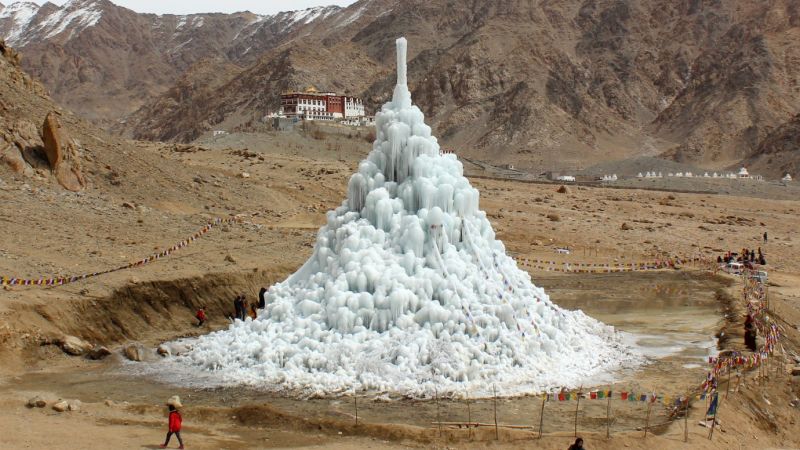This is the best summary I could come up with:
It’s the Ladakh region – meaning “land of high passes” – sandwiched between two of the world’s tallest mountain ranges, the Himalayas and the Kunlun.
But climate change is making this land even drier, leaving farmers without water in the crucial planting months of April and May, right before the glaciers start to melt in the summer sun.
Wangchuk had a simple idea: he wanted to balance this natural deficit by collecting water from melting snow and ice in the cold months, which would normally go to waste, and store it until spring, just when farmers need it the most.
It’s not the first type of artificial glacier in the area, but previous endeavors were only attempted above 13,000 feet (or 4,000 meters) by freezing waters in large canals which required shade and a lot of maintenance, and were located too far away from the fields to be practical.
Wangchuck estimated he would need around $125,000 to build his first full-scale version, which could reach 80 feet in height and provide irrigation to about 10 hectares of land: “It was too radical for any government to support, but I knew the people of the world would back it,” he says.
The campaign was successful and piqued the interest of the local institutions: “Now that the idea has been proven, the Ladhaki government is incorporating it its development plans.”
The original article contains 989 words, the summary contains 228 words. Saved 77%. I’m a bot and I’m open source!
That’s the Misty Palms Oasis


